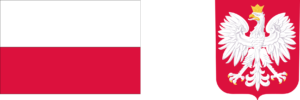In recent weeks, Serbia has witnessed widespread anti-government protests, primarily ignited by a tragic incident on November 1, 2024, when the concrete canopy of the recently renovated Novi Sad railway station collapsed, resulting in 15 fatalities. This disaster has been attributed to substandard reconstruction work, which many believe stemmed from governmental corruption and nepotism.
The initial spark for the demonstrations was the canopy collapse in Novi Sad. Public outrage grew as citizens blamed the incident on shoddy construction practices linked to corruption within the government. The tragedy led to daily protests, with participants demanding accountability and justice for the victims.
University students have been at the forefront of these protests. Classes at major institutions in Belgrade, Kragujevac, and Niš have been suspended for weeks as students demand the release of all documents related to the station’s renovation and the prosecution of officials responsible for the disaster. Daily, they observe 15 minutes of silence to honor each of the 15 victims.
The movement has garnered widespread support across various sectors. On January 24, 2025, a general strike saw numerous schools, bookstores, theaters, and bars in Belgrade and other parts of Serbia close in solidarity. Teachers’ unions backed the strike, leading to widespread school closures. Thousands of students held a 15-minute silence in memory of the victims and organized marches to further their cause.
In response to the growing dissent, President Aleksandar Vučić organized a rally in Jagodina on January 24, 2025, drawing several thousand supporters. Addressing the crowd, Vučić emphasized that „there will be no change of power in the streets” and announced the formation of a new „Movement for the Nation and the State,” aiming to unite ruling parties and their supporters. He also claimed that Serbia is under attack both externally and internally, referencing the country’s relationships with Russia and China as potential reasons for foreign criticism.
The protests have not been without incident. On January 24, 2025, in Belgrade, a woman drove her car into a crowd of anti-government protesters, injuring one individual. This event marked a significant escalation in tensions between protesters and government supporters.
The situation in Serbia has attracted international scrutiny. Over 300 European social organizations have condemned the expulsion of dozens of activists from various European countries by Serbian authorities, who labeled them as threats to national security. Human rights groups, including Amnesty International, have documented threats to journalists and the repression of demonstrations in Serbia.
The ongoing protests in Serbia represent a significant challenge to President Vučić’s administration. What began as a reaction to a tragic infrastructure failure has evolved into a broader movement against perceived systemic corruption and authoritarianism. As the situation develops, both domestic and international observers are closely monitoring the government’s response and the protesters’ demands for accountability and reform.






